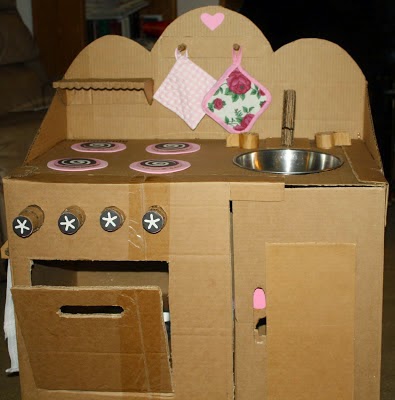I've heard of some wards who hold annual Nursery Toy Drives or Nursery Showers to stock up on quality and age appropriate toys. For many wards, stocking and replenishing toys and activity materials remains a constant struggle. When facing this challenge, it forces creativity.
If you are lucky enough to live in a ward that can fund quality nursery toys you are really blessed, but if that's not the case it's still possible to run a good nursery if you're willing to get creative.
At the time I was serving in the nursery we didn't have a play kitchen, so I came up with this cardboard version.
This ping pong toy I patterned after the marble versions, only the marbles are a choking hazard. Not so when using ping pongs. Again, using cardboard and a glue gun, you really can make a fun little toy.
Another activity that most children love is playing post office. Cardboard to the rescue again.
We set out stamps, stickers and envelopes along with crayons and let the children write and mail letters. This is best done on the big nursery table and setting the mailboxes in different corners of the room.
These type of activities are best used by letting the children play with them for a set time period and then removing when it's snack or lesson time to avoid distractions. Also, rotating them out every week or so works well, too.
Another idea is table top boat races. We set these up on the table and gave them a push across the surface. You have to show them how to do it at first but it's not long before they're sailing. Just let them have at it.
With a little thought, it's possible to keep nursery exciting and fun, even on a budget.
What low cost ideas have worked well for your nursery? Please share.













